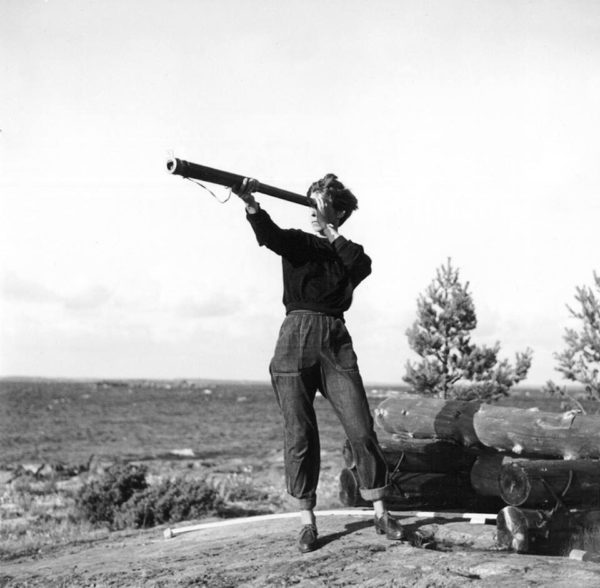
Knowing how much I love her, a reader sent me this terrific photo of Tove Jansson looking through a telescope. It reminded me of this poem, “The Light of the Universe,” and I immediately printed it out for my guardian spirits board in the bliss station.
Better images
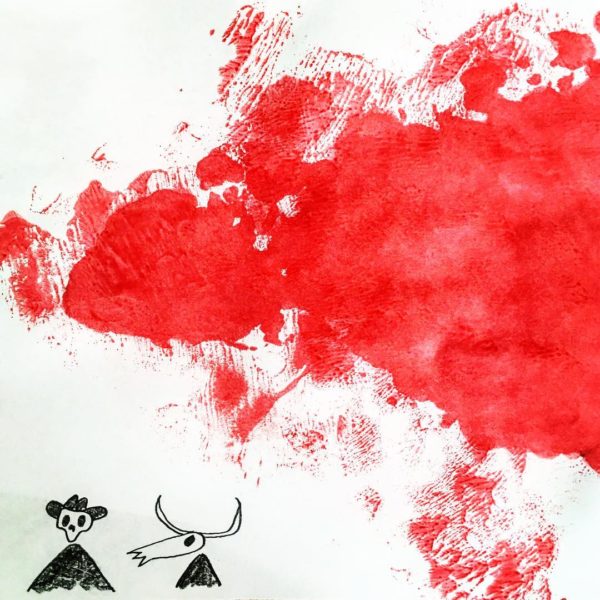
In Wim Wenders’ Room 666, he films a monologue by his friend Werner Herzog at the top of Tokyo Tower:
There are few images to be found. One has to dig for them like an archaeologist. One has to search through this ravaged landscape to find anything at all… I see so few people today who dare to address our lack of adequate images. We absolutely need images in tune with our civilization, images that resonate with what is deepest within us…
I’ve thought about Herzog’s words a lot in the past year. I’m always searching for images for my work, but also for my life. Looking for portraits of life outside of a default setting.
To have an imagination is simply to have the ability to make images that are not directly in front of you. When I hear people describe depression, it often sounds like the imagination shuts down— the brain just can’t make a picture of tomorrow that’s worth living for. That’s certainly what my own mild bouts of melancholy feel like: There’s just no image to hang on to, no picture I can make in my head of how life could be better.
Of course, the imagination needs to be fed. To make better images, you need to see better images.
Ursula K. Le Guin spoke beautifully of this need in her 2014 acceptance speech:
I think hard times are coming, when we will be wanting the voices of writers who can see alternatives to how we live now, and can see through our fear-stricken society and its obsessive technologies, to other ways of being. And even imagine some real grounds for hope. We will need writers who can remember freedom: poets, visionaries—the realists of a larger reality…. Power can be resisted and changed by human beings; resistance and change often begin in art, and very often in our art—the art of words.
Images matter. The images we hold in our mind are often the images that come true for us. When some warmongering asshole gets put in a position of power and people (even jokingly) tweet things like “we’re all going to die” (well, duh, that’s alwyas been true) we’re making bad images. So if we are to survive, we need to create and capture and share better images.
How to make your life go on forever

“You’re still working on that book?” my 5-year-old asked me this morning in disgust.
Later in the day, I found this book that he’d made lying on the kitchen table.

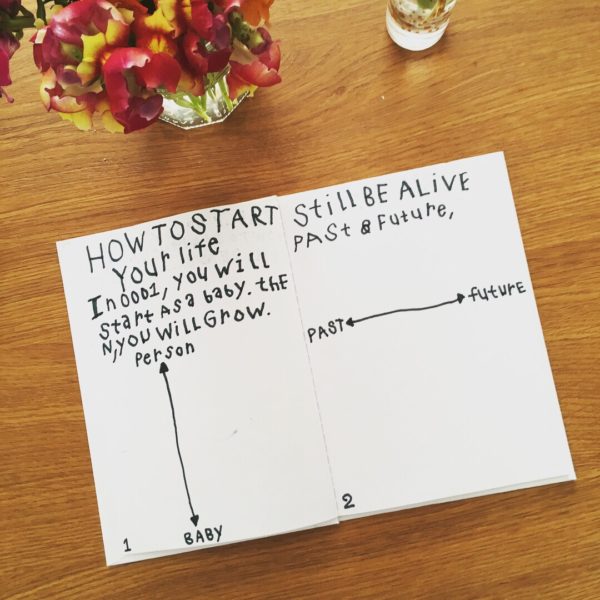
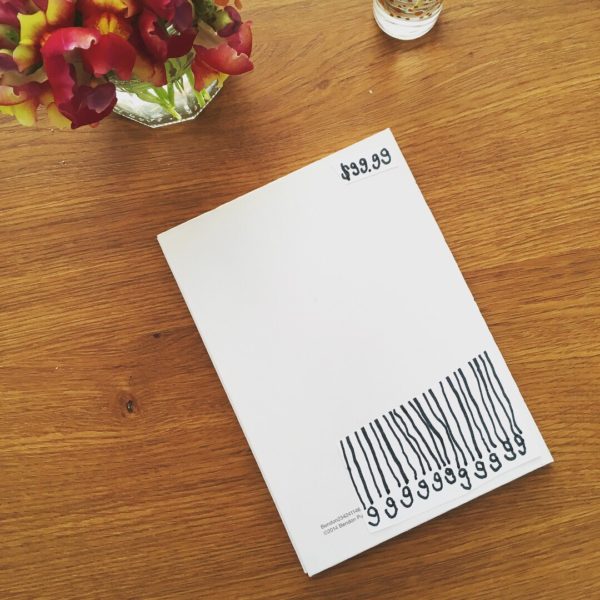
My wife asked him why it was so expensive and he said, “Because it’s a really good book.”
Kid’s got it.
When you let your 5-year-old hang out in the studio with you
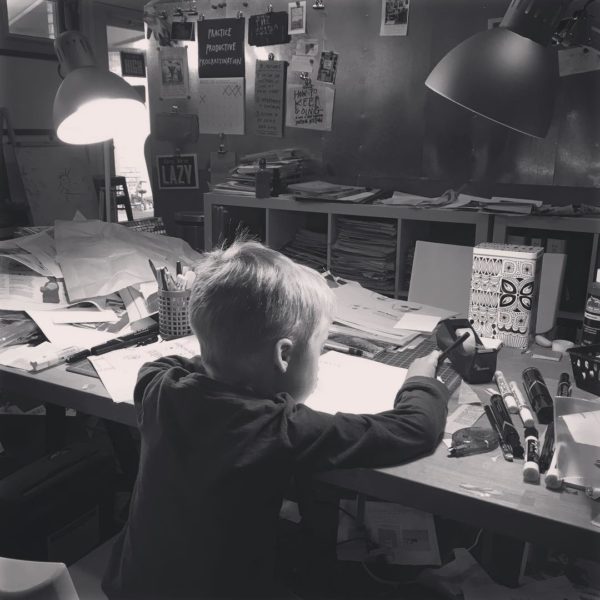
Sometimes I’ll let O come out to the garage with me if I know I’m doing some lighter work that doesn’t require my full concentration. Yesterday when we left to have lunch, he said this:

The Prelude
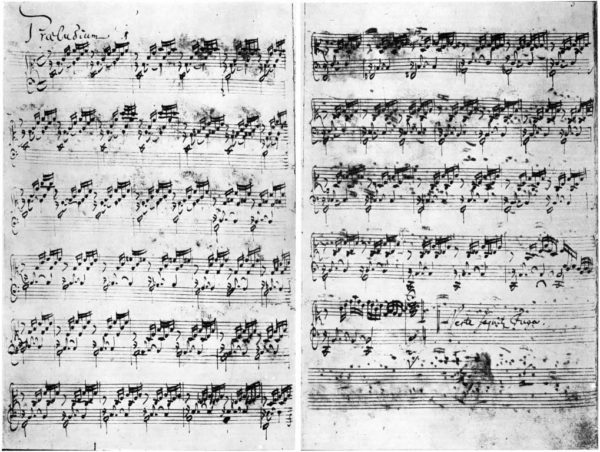
It’s Bach’s birthday (well, sort of), so I celebrated by playing the Prelude in C Major, my favorite piece for warming up on the piano. (It’s also the piece that pianist James Rhodes uses to teach beginners how to play.)
The alleged bomber blew himself up last night, and I thought today that I was going to sit down and blog about violence, about how hard I am trying to cleanse my house of violence, how violence is not just guns and bombs and knives and fists, but how many kinds of touch can be violent, how words can be violent, how you can stab your salad violently. How I’m not just trying to raise “gentlemen,” I’m trying to raise gentle men, men who have a full range of emotions and expression available to them. But it’s just so hard. Even if they’re home with me all day right now, I can’t protect them. They were born into a country steeped in violence. A country where killing machines are sold in convenience stores. A country that has a longtime habit of dropping bombs on innocent children just like them. A country that sees kids their age shot to death in classrooms and won’t do a thing about it.
The only thing I feel like I can do is make my home a haven, a place where we celebrate things of beauty and rationality and love and peace. Bach’s music is one of those things. James Rhodes went through unspeakably ugly things as a kid, and he has said when he heard Bach on a cassette tape, it “acted like a force field.” When I’m playing Bach, and when I’m listening to Bach being played, the world makes sense, if only briefly. After I play a Bach piece, I feel as though somebody has scrubbed my brain with a Brillo pad.
His music is so amazingly beautiful, but Bach didn’t grow up in some idyllic setting. Conductor John Eliot Gardiner, who’s written a biography of Bach, says that previous Bach biographies have painted rosy portraits of the composer, not allowing that a mere human could create such heavenly works. But his research has turned up evidence that Bach grew up in a “thuggish world.” (Don’t we all?) Bach was able to do what all great artists do: take their pain and despair and channel it into works of such beauty and truth that they turn us away from our own despair and towards the light. Artists like Bach do us the greatest service of any true artist: they give us encouragement to keep living, to keep going.
- ← Newer posts
- 1
- …
- 306
- 307
- 308
- 309
- 310
- …
- 635
- Older posts→